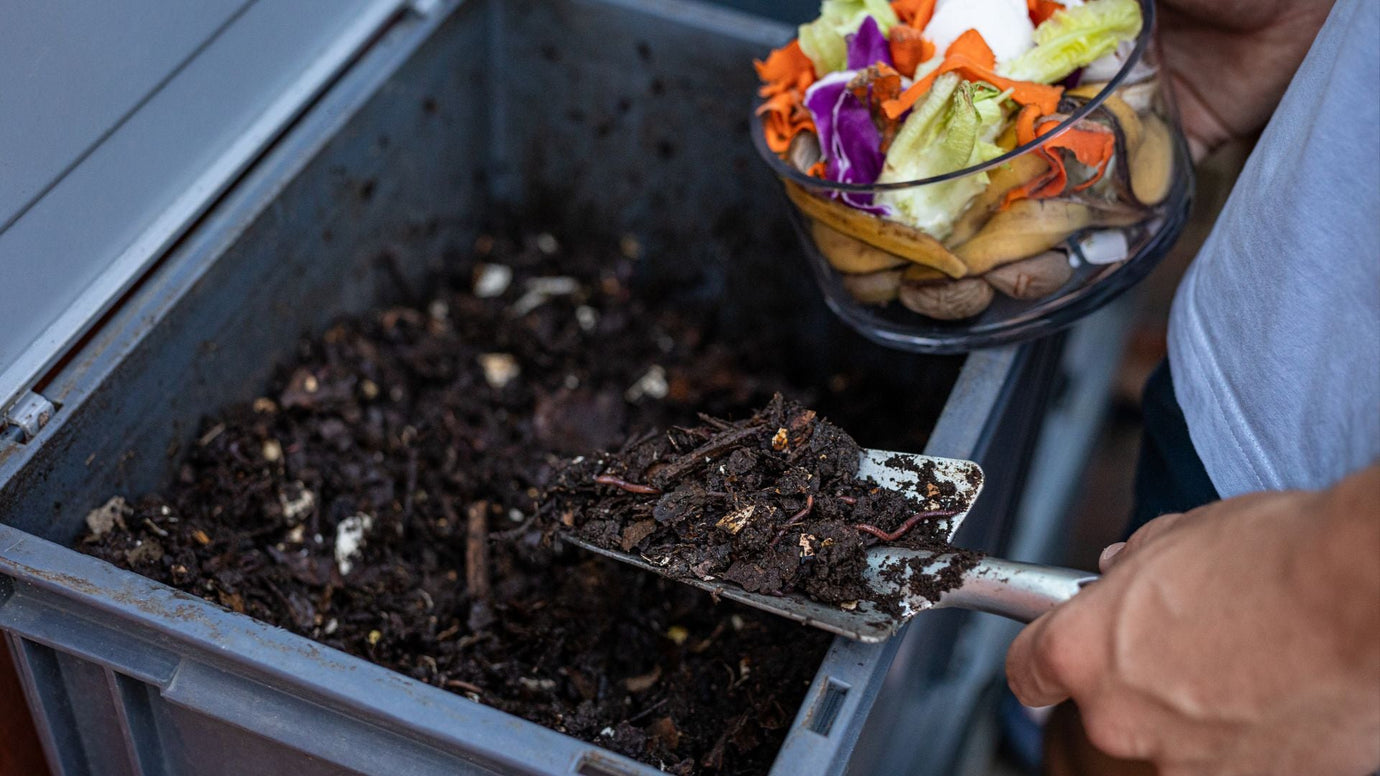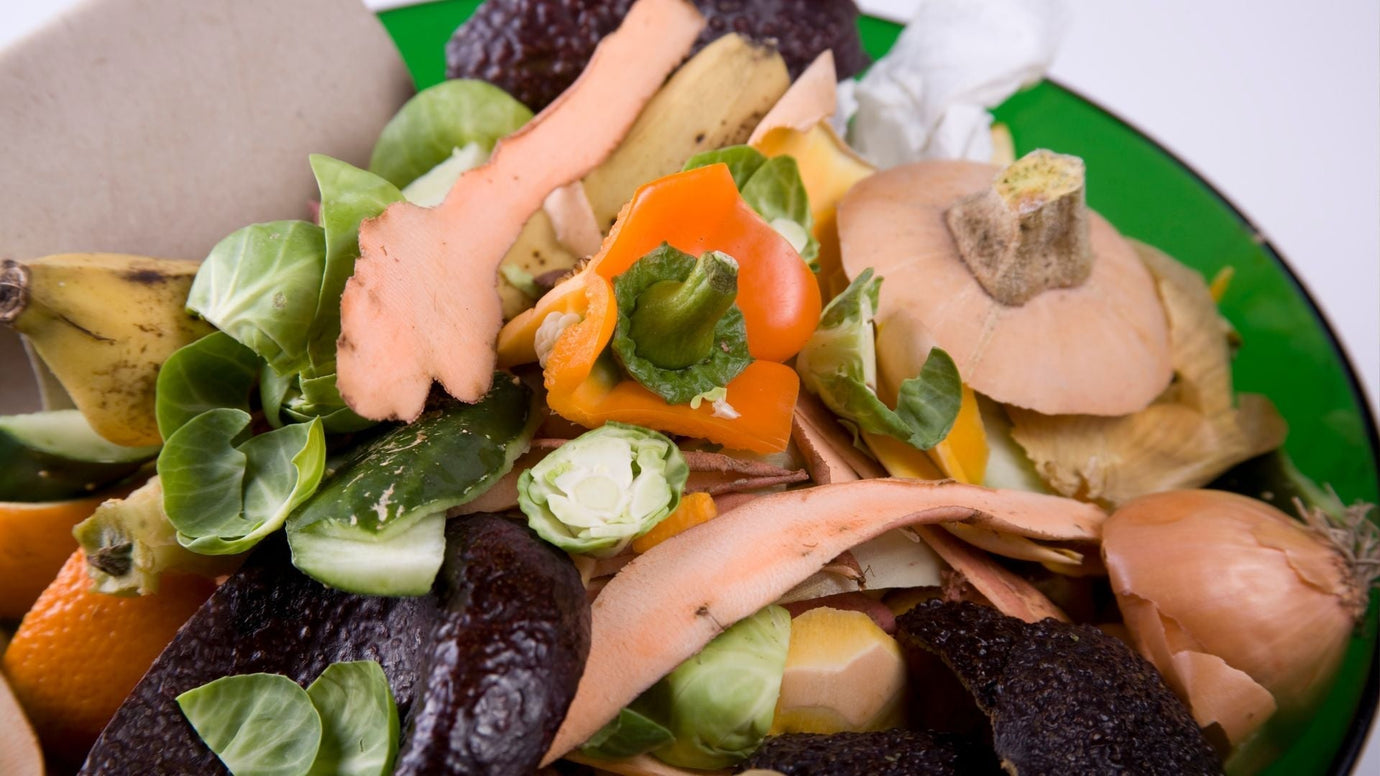Inside the Appliance That Turns Last Night’s Leftovers Into Tomorrow’s Plant Food
Food scraps pile up fast in the kitchen: veggie peels, half-eaten pasta, that rice no one touched. It feels wasteful to toss it, but traditional composting isn't always realistic in a busy household. Not everyone has a yard, the time to manage a compost pile, or the patience for the mess.
That’s where smart composters come in. These compact appliances sit right on the counter and help turn everyday food waste into dry, soil-ready compost with very little effort. No smell, no pests, and no hauling scraps outside.
If you’ve ever wondered what actually goes on inside one of these machines, and whether they’re worth the counter space, here’s a breakdown of how they work and how they can help your home reduce waste.

What It Does and How It Works
Electric composters use a mix of heat, grinding, and airflow to break down food scraps. The process usually runs for several hours, depending on what’s inside and which cycle you choose. Once finished, you’re left with a dry, crumbly material that looks a lot like soil and can be used in gardens, houseplants, or outdoor beds.
The setup is pretty simple. Scraps go in, and a few hours later, compost comes out. There’s no turning piles, measuring ratios, or waiting weeks for decomposition.
This type of system is useful for homes that cook often and end up with lots of peels, ends, and uneaten portions. It cuts the volume of waste significantly and turns it into something useful.
Built-In Tech That Makes It Easier
Many of these appliances now include connected features to help make composting even more straightforward. Some allow you to check progress from your phone, get notified when the compost is ready, or track how much waste you’ve kept out of the landfill.
There are also multiple composting cycles built in, usually geared toward different types of food waste. A general setting in a smart composter works for most scraps, but you may find quicker options for small batches, or specific cycles for cooked foods or yard trimmings. A cleaning cycle is often included as well, so forget about scrubbing out the chamber by hand.
Instead of guessing how long to run a cycle or what settings to use, the machine takes care of that behind the scenes. That’s a big help for households trying to build a waste-free routine without adding stress.

What You Can (and Shouldn’t) Add
Most kitchen scraps can go in:
-
Peels and cores from fruits or vegetables
-
Leftover rice, pasta, or bread
-
Coffee grounds and paper filters
-
Crushed eggshells
-
Small amounts of cooked food
It’s best to avoid anything super oily or greasy. Bones, large pits, and packaging should stay out, too. If you’re composting harder items like citrus rinds or carrots, chopping them into smaller pieces before adding them will help the cycle run more smoothly.
Modern countertop composter also allows continuous addition, meaning you can drop in scraps throughout the day and run a cycle at night. That’s a big plus if your kitchen sees constant activity.
Boosting the Process with Microbe Pods
Some composters use natural microbe pods to speed up breakdown and improve compost quality. These are small, dissolvable capsules that release compost-boosting bacteria during the cycle.
They’re optional but useful, especially if you’re composting frequently or mixing in heavier foods. The microbes help reduce odor and give you more consistent results. They also support long-term machine health by keeping the composting environment balanced.
If you're composting several times a week, it's worth keeping a supply of these on hand to support the process.
No Yard Needed
An electric food composter solves a lot of the challenges of traditional composting. You don’t need outdoor space. You don’t need to deal with insects or smells. You don’t even have to change much about your routine.
These machines are designed to sit on the counter or tuck into a corner. The lid seals tightly, and internal filters help trap odors. Most models run quietly, and the composting happens in a contained, clean environment.
Even in small apartments, it’s a manageable way to handle kitchen waste with no outdoor bin required.
Using the Compost
Once the cycle ends, you’ll have a dry, nutrient-rich material that’s ready to mix into soil or store for later use. The compost is lightweight, clean, and won’t attract pests, so it’s easy to store and apply.
The material helps support soil structure and adds organic matter that breaks down over time. It can be mixed into potting soil, added to outdoor beds, or stored to allow it to break down completely before use. The application method depends on what you’re growing and the maturity of your plants.
A Realistic Way to Cut Down on Waste
Food waste in the trash doesn’t just go away. In landfills, it breaks down slowly, creating methane, a harmful greenhouse gas. Composting at home helps reduce that impact and puts nutrients back into the soil instead.
An electric food composter makes that process part of your everyday kitchen routine. No hauling, no waiting, no mess. Just a few cycles a week and a more sustainable way to handle food waste.
For families, home cooks, and plant lovers alike, it’s a step toward a cleaner kitchen and a smaller footprint.







